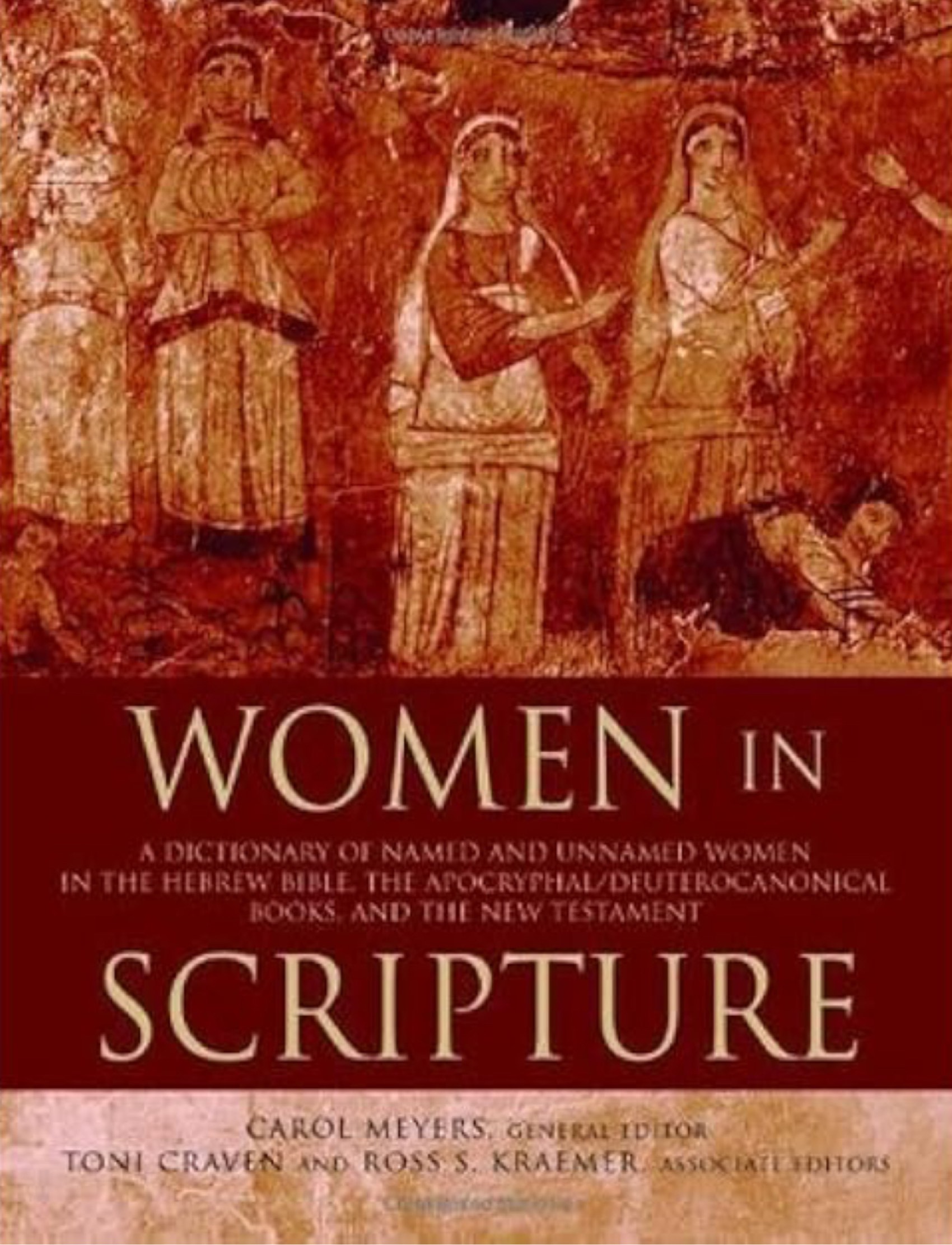WOMEN IN SCRIPTURE
Summary of Women in Scripture
Women in Scripture, edited by Carol Meyers, Toni Craven, and Ross S. Kraemer, is a comprehensive reference book that provides an in-depth examination of named and unnamed women in the Bible. It is structured as a dictionary, systematically organizing biblical female figures and exploring their roles, identities, and representation in ancient texts. The book also examines female deities, personifications, and symbolic representations of women in biblical literature.
Key Themes and Structure:
1. Introduction to Biblical Women Studies
• The book highlights the increased scholarly attention on biblical women over the past decades.
• It discusses how biblical texts have shaped perceptions of gender and influenced religious, social, and political ideologies.
• The introduction also notes how post-biblical cultural interpretations often distort or expand on biblical portrayals of women.
2. Part I: Named Women in Scripture
• This section covers 205 named women found in the Hebrew Bible, the Apocryphal/Deuterocanonical books, and the New Testament.
• Some women appear under multiple names, such as Naomi (also called Mara) and Esther (also known as Hadassah).
• The most frequently mentioned name in the Hebrew Bible is Maacah, attributed to seven different women, while Mary is the most common name in the New Testament.
3. Part II: Unnamed Women in Scripture
• The majority of female figures in the Bible remain unnamed, yet their roles are often crucial in biblical narratives.
• This section systematically identifies and analyzes these women, categorizing them by their biblical books and roles (e.g., the daughter of Jephthah, the Samaritan woman at the well).
• The book acknowledges the cultural and literary reasons for the absence of women’s names in many stories.
4. Part III: Female Deities, Personifications, and Symbols
• This section explores non-human female figures in the Bible, including goddesses (e.g., Asherah), personifications (e.g., Wisdom), and metaphoric representations (e.g., cities and nations depicted as women).
• It also examines the use of female imagery in describing God in biblical texts.
Scholarly Contributions and Methodology
• The book compiles research from over seventy scholars across different disciplines, including biblical studies, history, and feminist theology.
• It incorporates historical-critical methods, feminist biblical interpretation, and linguistic analysis to provide a nuanced understanding of the biblical text.
• Each entry includes relevant biblical passages, scholarly commentary, and cross-references to related figures or themes.
Conclusion
Women in Scripture serves as an essential resource for understanding the complex and often overlooked roles of women in the Bible. It bridges the gap between academic scholarship and general readership, making feminist biblical studies accessible while preserving scholarly depth.
